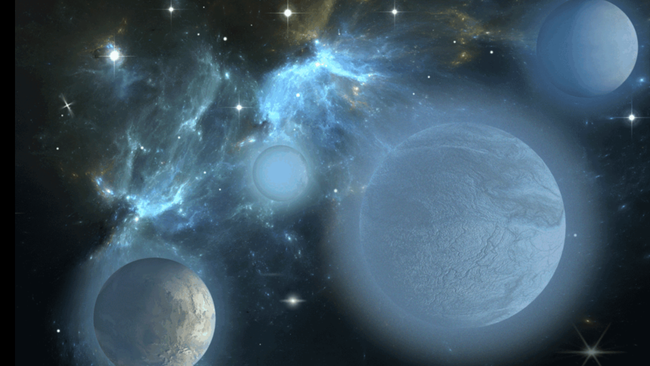Exploring Alien Life: James Webb Space Telescope to Seek ‘Carbon-Lite’ Exoplanet Atmospheres
We possess a method to detect the presence of liquid water on another planet, achievable within the coming years.
In the pursuit of detecting liquid water on planets beyond our solar system, crucial for sustaining life, the James Webb Space Telescope (JWST) might focus on identifying what’s absent rather than present.

Here’s the concept:
A research team, including experts from Massachusetts Institute of Technology (MIT) and the University of Birmingham, proposes that rocky exoplanets akin to Earth could exhibit lower levels of atmospheric carbon dioxide compared to other planets within the same system. This potential disparity might signify the presence of liquid water. Considering the significance of liquid water in supporting life, as evidenced by our planet’s history, this factor becomes a pivotal indicator of habitability.
While current technology teeters on the edge of detecting key chemical markers for habitability on exoplanets, the JWST is now equipped to identify depleted carbon dioxide levels—a significant signature.
Julien de Wit, an assistant professor of planetary sciences at MIT and a member of the discovery team, highlighted, “The ultimate goal in exoplanet research is to identify habitable worlds and signs of life. However, the characteristics discussed so far have remained beyond the capabilities of the latest observatories. Now, we have a feasible method to ascertain the presence of liquid water on distant planets—a milestone within our grasp in the coming years.”
A roadmap to discovering life on exoplanets
Presently, scientists excel in utilizing instruments to ascertain a planet’s distance from its host star, identifying its position within the “habitable zone”—defined as the area conducive to the existence of liquid water. However, within our solar system, despite Earth, Mars, and Venus residing within this zone, only Earth sustains known life. This disparity reveals that habitability and the preservation of liquid water on exoplanets extend beyond mere location considerations. Hence, a concrete method to confirm a planet’s habitability eludes scientists.
Delving into Earth, Mars, and Venus, the research team noted a crucial distinction: Earth, the habitable planet, possesses an atmosphere significantly lacking in carbon dioxide compared to its zone-dwelling neighbors. Triaud emphasized, “Considering these planets’ presumed similar origins, a substantial reduction in carbon content on one planet suggests a process at play—the removal of carbon, primarily via an intensive water cycle involving liquid oceans.”
Over eons, Earth’s oceans have effectively depleted substantial carbon dioxide from the atmosphere, rendering it lesser in quantity than Venus or Mars.
Frieder Klein, a co-author and scientist at the Woods Hole Oceanographic Institution (WHOI), highlighted, “On Earth, a substantial portion of atmospheric carbon dioxide has been sequestered in oceans and rocks over immense time frames, a regulatory process pivotal for climate stability and habitability over billions of years.”
This realization prompted the team to theorize that a comparable depletion of carbon dioxide in an exoplanet’s atmosphere might signify the existence of a liquid ocean.
Focusing on “peas-in-a-pod” planetary systems, akin to our solar system, harboring multiple rocky worlds orbiting their star at similar distances, the team proposed a search strategy. The initial phase involves detecting carbon dioxide as an indicator of atmospheric presence on exoplanet targets. Subsequently, analyzing the carbon dioxide levels across multiple planets in a system may reveal substantial differences, signifying the potential presence of liquid water and thus potential habitability.
However, gauging “habitability” doesn’t equate to confirming inhabited conditions. To delve deeper, the team suggests examining another molecule: ozone. This molecule, formed through life processes on Earth, serves as an indicator of these processes on distant exoplanets, easier to detect than oxygen itself.
Triaud explained, “Detecting ozone suggests potential carbon dioxide consumption by life. This points toward thriving life on a planetary scale, not merely a few bacteria but a substantial biomass capable of processing vast carbon amounts.”
The researchers believe that the JWST possesses the capability to measure carbon dioxide and ozone levels in multiplanet systems, including the TRAPPIST-1 system with seven Earth-like planets in the habitable zone.
De Wit concluded, “TRAPPIST-1 is among the few systems where JWST could conduct terrestrial atmospheric studies. With a collaborative effort, groundbreaking discoveries might emerge in the coming years.”
The team’s research was published on Dec. 28 in the journal Nature Astronomy.
Do not forget to share your opinion with us to provide you with the best posts !



0 Comments